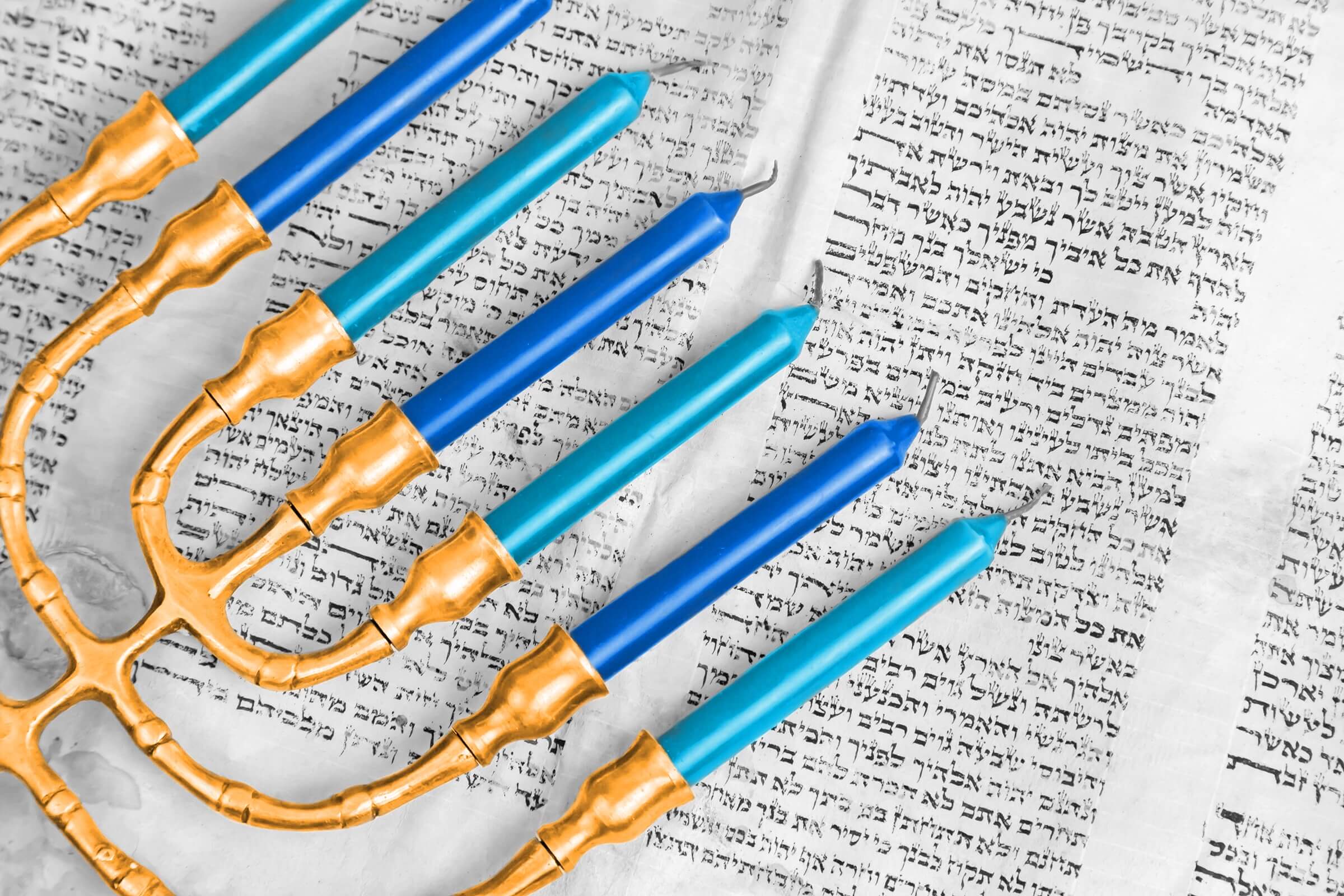

In late November and December (depending on the year), millions of Jewish people around the world celebrate the eight-day-long Festival of Lights known as Hanukkah. For each of the eight nights, Jewish families light the menorah in remembrance of an important moment in their history that took place some 2,200 years ago. During the 19th century, Jews usually simply lit a special type of menorah, a hanukkiyah, during the celebration, but by the 1920s gift-giving had become a common practice, especially in North America, where the holiday was influenced by Christmas. Heard of “Elf on a Shelf”? Well, meet the “Mensch on a Bench.” But at its core, Hanukkah is a time to be with family and observe Jewish traditions. Here are seven interesting facts about this ancient holiday.
Hanukkah Means “Dedication”

The word “Hanukkah” is a transliteration of the Hebrew word for “dedication.” This is a reference to the historical moment at the heart of the holiday, the rededication of the Second Temple of Jerusalem during the Maccabean Revolt of the second century BCE. At the time, the Hellenistic Seleucid Empire was forcibly oppressing the Jewish population by trying to eradicate their religious practices; as part of this effort, they defiled the temple and placed an idol on its altar. In 164 BCE, the Maccabees (a group of Jewish warriors) recaptured Jerusalem, cleansed the temple, and rededicated it on the 25th day of Kislev, a month in the Hebrew calendar (and the date used today to mark the beginning of Hanukkah). The eight candles on a hanukkiyah commemorate the moment when Jews relit the temple’s ner tamid (Hebrew for “eternal light”), a lamp meant to burn perpetually in a synagogue. Although they had only one day’s worth of oil, the flame miraculously burned for eight days — enough time to get more purified oil to feed the flame.
There Are Around 14 Different Ways to Spell "Hanukkah"

Because “Hanukkah” is a transliteration of a Hebrew word (not a direct translation), there’s technically no “correct” way to spell it. Although the Merriam-Webster dictionary prefers “Hanukkah,” other spellings such as “Chanukah,” “Hanukah,” or even “Hannuka” may also be considered correct. According to Time magazine, there are technically about 14 different ways you can spell the name of the holiday. Traditionalists prefer “Chanukah,” which used to be the preferred spelling, but since many English speakers have trouble pronouncing the “ch” as it would be in Hebrew — with a guttural sound — “Hanukkah” became the more common spelling, as the “h” sound was easier to pronounce for English speakers. (Whatever you do, don’t pronounce the “ch” as a tch sound, like the start of “child” — think “Happy Hanukkah,” not “Chappy Chanukah.”)
It’s a Minor Jewish Holiday

Although Hanukkah is one of the most talked-about Jewish holidays because of its proximity to Christmas, it’s far from the faith’s holiest of days. The two High Holy days for Jews are Rosh Hashanah, which is a new year celebration, and Yom Kippur, or “Day of Atonement,” when Jews seek reconciliation with God for their sins. Even somewhat lesser-known holidays, such as Sukkot, are considered more religiously important than Hanukkah. However, the holiday’s commercialization (in lock step with Christmas) during the 20th century has made it one of the most well-known celebrations of Judaism around the world.
Jelly Doughnuts, or “Sufganiyot,” Are a Popular Hanukkah Treat

During Hanukkah, Jews also enjoy a traditional sweet called sufganiyot, a name based on words found in the Talmud meaning “spongy dough.” A cross between a beignet and a doughnut, sufganiyot are fried in oil (the same as latkes), which represents the oil central to the miracle at the heart of the holiday. They are then filled with a jam or custard before being dusted with powdered sugar. Hanukkah is about tradition, but no one said it had to be healthy.
The First Day of Hanukkah Sometimes (But Rarely) Falls on Thanksgiving

Although Hanukkah is usually more aligned with Christmas, on very rare occasions it can fall on Thanksgiving instead. The date for Hanukkah is based on the Hebrew calendar, which is known as a lunisolar calendar because it uses the sun and the moon to determine dates. The dates in the Hebrew calendar don’t necessarily match up with the Gregorian calendar from year to year, which means that Hanukkah, which begins on 25 Kislev, can fall on various dates from late November to late December. In 2013, the first day of Hanukkah fell on Thanksgiving in the U.S., giving rise to the popular portmanteau “Thanksgivukkah.” The next Thanksgivukkah won’t occur until the year 2070.
The Letters on a Dreidel Form a Meaningful Acronym

Playing the dreidel is a popular Hanukkah game that involves a spinning top and a good bit of luck. The letters on the dreidel themselves relate to the holiday. Nun, gimel, hey, and shin form an acronym that is said to mean Nes gadol hayah sham, or “a great miracle happened there.” This is a reference to the miracle of the oil that fueled the ancient ner tamid thousands of years ago. Oh, and in case you were wondering, Major League Dreidel is a thing.
You Need 44 Candles to Celebrate Hanukkah

The menorah holds eight candles and a shamash, or “helper” candle that lights the other candles and sits either higher or lower than the other eight. Candles are traditionally placed in the menorah right to left, the same way Hebrew is read, but the candles themselves are lit left to right. Because you light a new candle every day, multiply these candles (and shamash) across eight days and the typical Hanukkah celebration will melt through 44 candles. No need to count out all those candles though — Hanukkah candle boxes are typically sold with exactly 44 candles already tucked inside.
